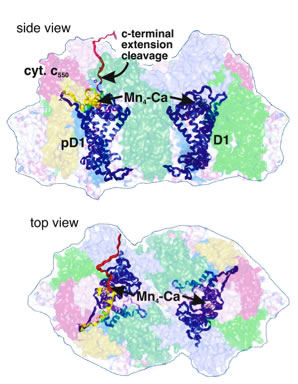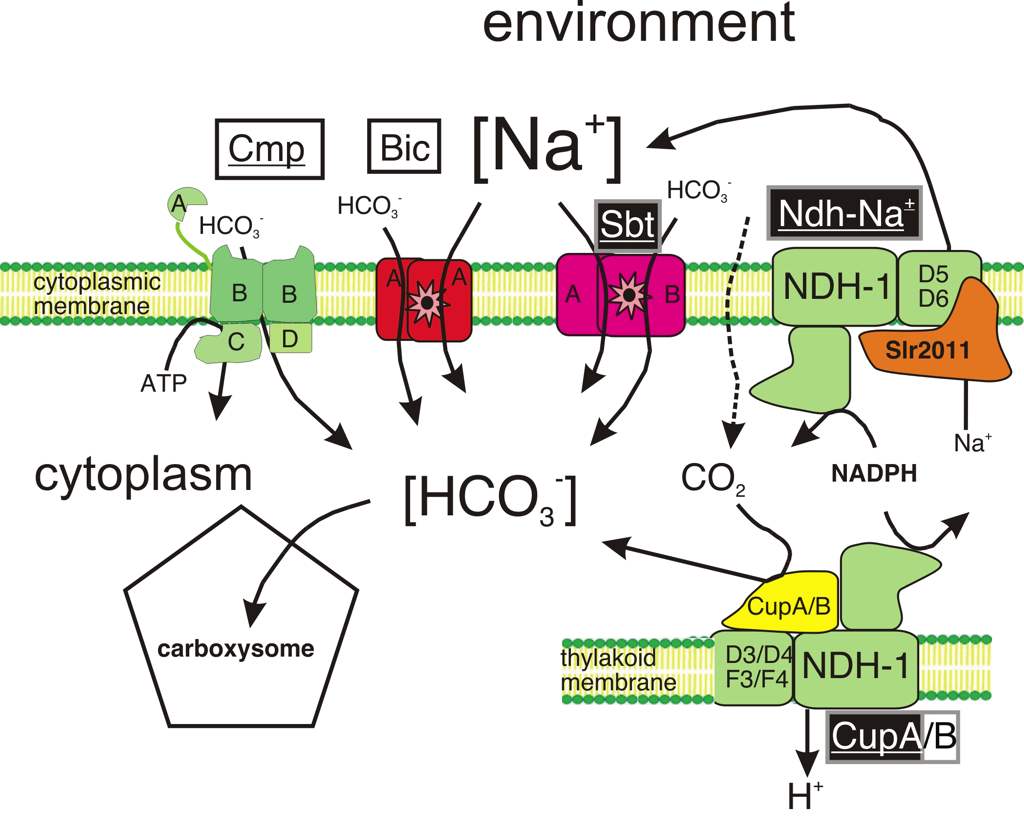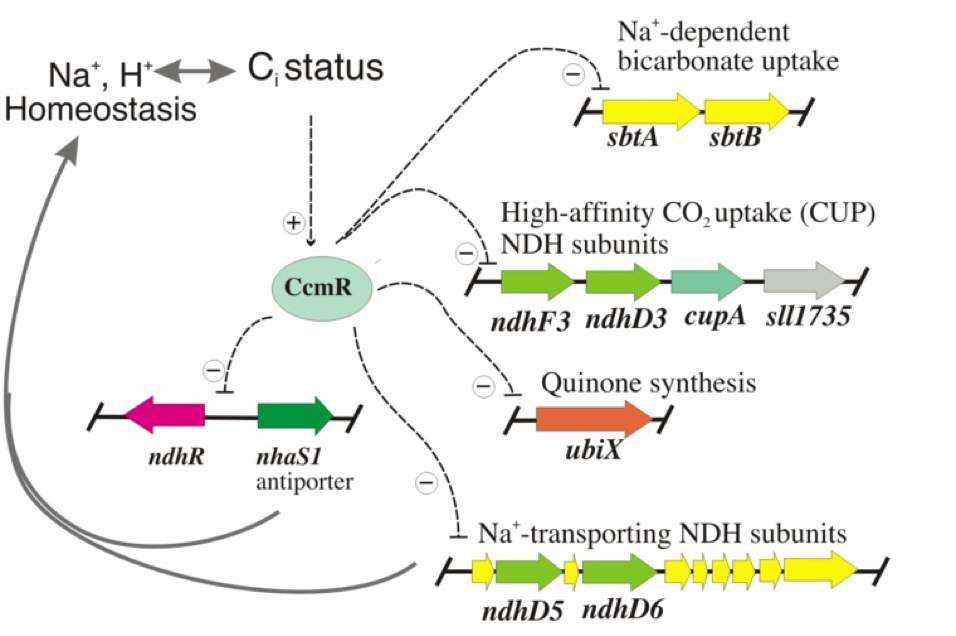Research
Water Oxidation
PSII is a remarkably dynamic structure that is under a constant state of repair owing to the incessant photodamage it incurs during its normal operation. The repair occurs via a complex assembly pathway involving the removal of damaged D1 protein, insertion and proteolytic processing of the nascent D1 protein precursor and the assembly of the metal atoms of the manganese cluster (Mn4-Ca), which is the heart of the water oxidation reaction. The D1 protein is effectively the ‘Achilles Heel’ of the photosynthetic mechanism since it is the locus of most of the above mentioned photodamage. The D1 protein also coordinates the key co-factors involved in charge separation including the Mn4-Ca catalytic cluster. A dedicated and conserved D1 damage detection and replacement mechanism has evolved to repair the damage, but remains to be understood.
The major objectives are to elucidate:
- The molecular mechanisms responsible for the detection and repair of the D1 protein,
- Assembly of the metal atoms of the Mn4-Ca into protein coordination environment, and
- Proton ejection during assembly and catalysis.
Cyanobacterial Bioenergetics
The major objective is to define the transcriptional regulatory circuitry controlling inorganic carbon assimilation and determine its integration with light reactions of oxygenic photosynthesis in the experimental model Synechocystis sp. PCC6803. These molecular genetic issues will be studied in the context of detailed biophysical and biochemical analyses in order to connect genetic regulatory mechanisms with bioenergetic and nutrient functions. Therefore the project involves the parallel use of advanced molecular genetic analyses to probe gene expression along side with decisive biochemical and biophysical analyses to evaluate the functional precursors and consequences, affecting and responding to changes in gene expression. In other words, the project emphasizes the interplay between physiology and molecular genetics that allow cyanobacteria to effectively exploit their changing environments.
The principal hypothesis is that the genetic integration of the light and dark reactions is achieved mainly through the physiological interactions: key metabolic intermediates which are mutually affected by these processes are hypothesized to be the modulators of transcriptional activation and repression.



